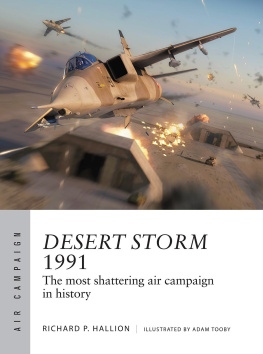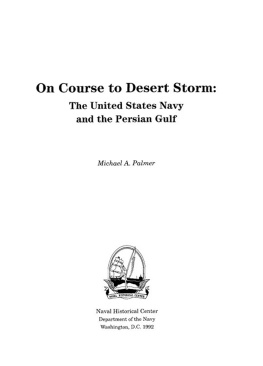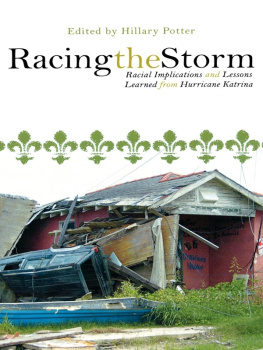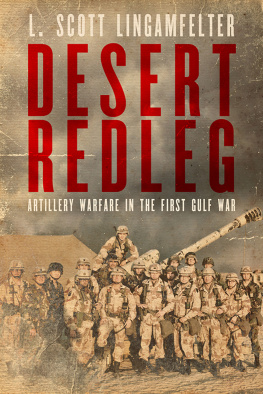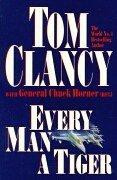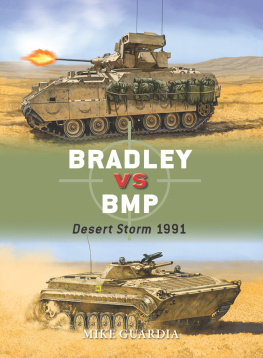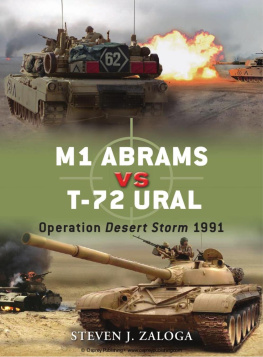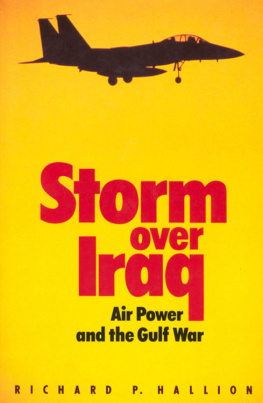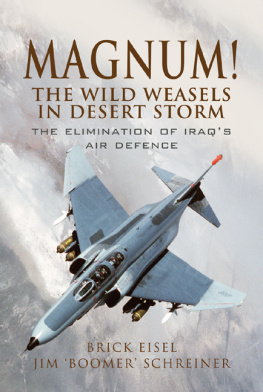First published 1993 by Westview Press, Inc.
Published 2018 by Routledge
52 Vanderbilt Avenue, New York, NY 10017
2 Park Square, Milton Park, Abingdon, Oxon OX14 4RN
Routledge is an imprint of the Taylor & Francis Group, an informa business
Copyright 1993 by the Center for Strategic and International Studies
All rights reserved. No part of this book may be reprinted or reproduced or utilised in any form or by any electronic, mechanical, or other means, now known or hereafter invented, including photocopying and recording, or in any information storage or retrieval system, without permission in writing from the publishers.
Notice:
Product or corporate names may be trademarks or registered trademarks, and are used only for identification and explanation without intent to infringe.
Library of Congress Cataloging-in-Publication Data
Mazarr, Michael J., 1965
Desert Storm : the Gulf War and what we learned / Michael J. Mazarr, Don M. Snider, and James A. Blackwell, Jr.
p. cm.
Includes bibliographical references (p. ) and index.
ISBN 0-8133-1598-0
1. Persian Gulf War, 1991. I. Snider, Don M., 1940-II. Blackwell, James. III. Title.
DS79.72.M384 1993
956.704'42dc20
92-29687
CIP
ISBN 13: 978-0-367-00490-3 (hbk)
1
An Unexpected War
At 9:30 P.M. on Wednesday, January 16,1991, the pilots and aircrew of the U.S. 48th Tactical Fighter Wing were receiving the orders that would send them to war. Iraqi leader Saddam Hussein had ignored the United Nations ultimatum to leave Kuwait, and the military forces of the coalition arrayed against Iraq were preparing to push him out by force. Flying big F-lll fighter-bombers and electronic warfare planes, the 48th consisted of units based in England and Idaho, transferred to the Gulf to fight in a war no one had expected. Senior officers of the 48th briefed the squadron on its mission; across the whole front, a massive air assault on Iraqi forces and command centers was about to begin.
At 1:20a.M. on January 17, Saudi time, the F-lllsover 70 feet long and with 60 feet of wingspantook to the sky, their turbofan engines glowing brightly in the dark of a moonless Gulf night. On their way to attack Iraqi air bases, the fighter-bombers were accompanied by other aircraft equipped to jam and suppress enemy radar and other electronic equipment. The squadron was also supported by old F-4 fighters carrying antiradar missiles whose mission was to attack Iraqi antiaircraft and radar sites.
More than 60 F-11 Is crossed the Iraqi border at over 600 miles an hour, flying low200 feet or lessto avoid being picked up on Iraqi radar. By 3 A.M., the coalition attack was well under way throughout the theater. On reaching their target, the F-llls climbed rapidly to 5,000 feet and engaged their "Pave Pack" systemsa combination laser and infrared television camera used to mark targets. Similar equipment would soon provide many of the stunning images of the war: videotapes of bombs crashing into Iraqi command posts or hitting the front doors of aircraft hangars. Weapons system operators (WSOs) sitting in the F-llls looked into their viewers and picked out targets, designating them with laser-guidance beams.
The Iraqi defenders were wide awake and aware of the attack, and soon F-111s detected the search radars of surface-to-air missiles. The F-4s swung into action, shooting high-speed antiradar missiles (HARMs) to silence the Iraqi positions. Deadly streams of antiaircraft gunfire reached up to the U.S. planes. The Iraqis were trying desperately to knock them out of the sky before they delivered their ordnanceaccurate laser-guided bombs, thousands of pounds of them on each aircraft. The WSOs dropped their bombs and watched as targets explodedweapons storage bunkers, maintenance hangars, aircraft shelters.
Most of the planes were over Iraqi airspace for about forty minutes, flying 200 or more miles inside hostile territory. The sky, the pilots reported on their return, was filled with coalition aircraft. This first night over 2,000 "sorties"individual attacks by coalition aircraftwere flown.
On the squadron's return, a reporter noticed a unique shoulder patch being worn by one of the squadron's pilots. Bearing a crude image of the F-111, it had been designed especially for the occasion. "Baghdad Bash," it read. "Let's Party."
Reviewing the story of how U.S. F-111 fighter-bombers came to fly over Iraq, helping to start a conflict in January 1991, is a fascinatingand often depressingenterprise. As recently as March or April of 1990, no one in the U.S. government would have suspected that the United States and an international coalition would be at war with Iraq just months later. U.S. defense and foreign policy had focused on the Soviet threat for forty years, viewing other conflicts as examples of a global U.S.-Soviet competition. But here was Saddam Hussein at the head of a half-million-man army, equipped with some of the world's most advanced military equipment. His scientists were speeding to build chemical, biological, and nuclear weapons, which would pose a grave threat to the world's oil supplies. Where did this crisis come from? How did the U.S. military come to be so quickly reoriented from deterring Soviet expansion in Europe to fighting a brutal dictator intent on regional hegemony?
The story of the war, of its prelude and aftermath and, most of all, of its lessons, is the focus of this book. Before we delve into the history of the conflict, though, it is important to understand the war's wider context. To understand the Gulf War one must know where it fits into U.S. foreign policy and why the Rush administration was disposed to react as it did. What business did U.S. troops have intervening in a war between Arab states thousands of miles from U.S. shores? And what is the war's place in history? Ten or fifty years from now, will the Gulf War be viewed (as many instantly proclaimed) as the prototypical conflict of the post-cold war order? Or will it be seen as an interesting but largely discrete event that can do little to inform our understanding of conflict, or to prevent it, in the modern era?
Answering these questions is difficult, in part because the Gulf War was many things to many people. For Saddam Hussein, it was an opportunity to solve his pressing economic problems and become master of 40 percent of the world's oil reserves while staking a bold claim for leadership of the entire Arab world. For George Bush, Hussein's aggression created a clear need to respond to unprovoked aggression and in so doing to begin the redefinition of the U.S. role in the world in the aftermath of the cold wara necessary exercise for which the administration was ill-prepared. Israel's leaders undoubtedly viewed the war as a once-in-a-lifetime chance to see one of their primary nemeses crushed. For the Arab nations of the coalition, a conflict with Iraq was a necessary, if regrettable, response to Hussein's fanaticism and deception; Palestinians and Jordanians, however, welcomed a menacing blow against the rich Arab states, which they believed did not sufficiently share their oil wealth. For Iran it was a chance to condemn and achieve vicarious revenge against its former adversary. For Europe, Japan, and other non-U.S. and non-Arab members of the coalition, the war varied in importance and response from country to country.





